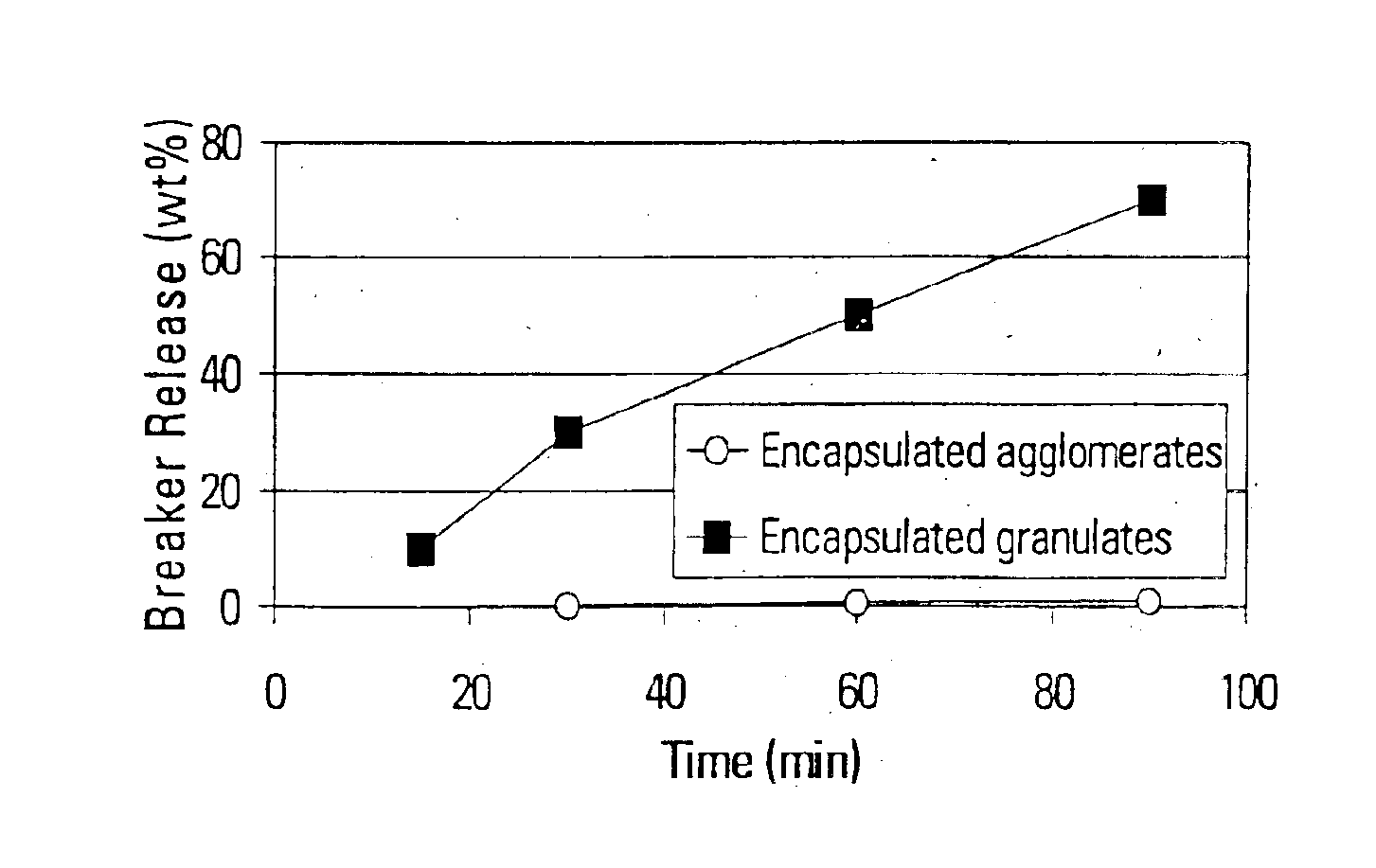Method for treating subterranean formation
a technology of subterranean formation and subterranean water, which is applied in the direction of sealing/packing, chemistry apparatus and processes, and wellbore/well accessories. it can solve the problems of reducing the formation permeability, increasing the probability of fracture closure, and reducing the production
- Summary
- Abstract
- Description
- Claims
- Application Information
AI Technical Summary
Problems solved by technology
Method used
Image
Examples
Embodiment Construction
An inorganic sulfonate that is only available in powder form (having an average particle size of about 250 mesh) is shown in A in FIGS. 1 and 2. It can be agglomerated with binding material to produce particles in the size range of 20 / 40 mesh (B). However, the shape of the agglomerates is too irregular for encapsulation and the particles are also too weak to undergo the coating process. Part of the agglomerates will survive the coating process (C). However, the release rate is very fast even with high coating level (FIG. 3, solid squares).
In the context of well stimulation, the coating material preferably releases the encapsulated granulates to the well treatment fluid essentially by the crushing of the capsules due to the closure of the formation. In other cases, said enclosure is degraded under the conditions of pressure and temperature existing in the subterranean formation. Of course, a combination of the two release mechanisms, and others such as osmosis, may also occur and be ...
PUM
| Property | Measurement | Unit |
|---|---|---|
| size | aaaaa | aaaaa |
| size | aaaaa | aaaaa |
| size | aaaaa | aaaaa |
Abstract
Description
Claims
Application Information
 Login to View More
Login to View More - R&D
- Intellectual Property
- Life Sciences
- Materials
- Tech Scout
- Unparalleled Data Quality
- Higher Quality Content
- 60% Fewer Hallucinations
Browse by: Latest US Patents, China's latest patents, Technical Efficacy Thesaurus, Application Domain, Technology Topic, Popular Technical Reports.
© 2025 PatSnap. All rights reserved.Legal|Privacy policy|Modern Slavery Act Transparency Statement|Sitemap|About US| Contact US: help@patsnap.com


